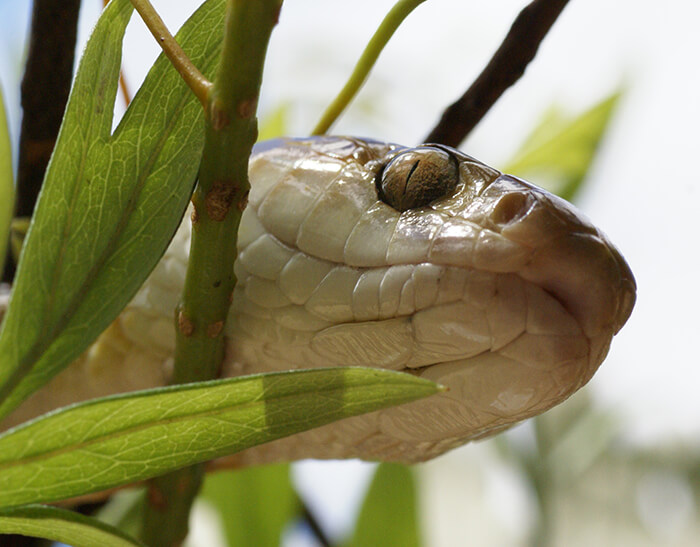Introduction
When it concerns the fascinating world of serpents, couple of types catch the creative imagination quite like the infant tiger serpent. Understood for their distinctive pigmentation and powerful venom, these snakes are an integral component of Australia's distinct environment. In this comprehensive post, we will look into different aspects of baby tiger serpents, including their habits, environment, and how to safely interact with them. Whether you're a wildlife lover or just curious regarding these creatures, recognizing baby tiger serpents can aid cultivate a deeper recognition for nature.

Baby Tiger Snakes: What You Required to Learn About Their Behavior and Habitat
What Are Infant Tiger Snakes?
Baby tiger serpents are adolescent forms of the highly poisonous species known scientifically as Notechis scutatus These serpents are mainly found in seaside regions of Australia, particularly in Tasmania and southerly Victoria. As they expand, their pigmentation changes from a much more low-key scheme to the particular yellow and black bands that provide their name.
One remarkable aspect of child tiger snakes is their dimension; hatchlings generally measure around http://remingtonqxmq355.almoheet-travel.com/snakes-and-safety-first-aid-tips-for-outdoor-enthusiasts-1 25-30 cm in size. In spite of their small stature, they possess an unusual quantity of poison that can be detrimental to people if bitten.

Physical Characteristics
Tiger serpents possess several key physical attributes:
- Coloration: The distinctive banding pattern commonly becomes much more pronounced as they mature. Size: Grownups can get to sizes of as much as 2 meters. Body Shape: They have a robust body that assists in swimming and terrestrial movement.
Where Do Infant Tiger Snakes Live? Recognizing Their Habitat
Understanding the habitat choices of child tiger snakes is essential for both conservation efforts and public security. These snakes flourish in different atmospheres:
- Wetlands: Marshes and swamps provide sufficient searching grounds. Coastal Regions: Frequently found near beaches where they can hunt for prey. Woodlands: Dense plants supplies cover from predators.
Geographical Distribution
Tiger serpents are primarily located along Australia's southern coast, including:
- Tasmania: Home to one of one of the most infamous populations. Victoria: Especially in areas near water bodies.
Are Tiger Snakes Venomous? A Deep Study Their Venom
One common question arises when discussing infant tiger snakes: "Are tiger serpents venomous?" The response is a resounding yes!
Venom Composition
The poison of tiger snakes includes neurotoxins that can create paralysis, coagulopathy (blood clotting issues), and potentially fatality if untreated. Right here's what you require to know:
- Effects on Humans: A bite from a tiger snake can cause symptoms like swelling, pain at the bite website, nausea or vomiting, and even breathing failure.
Comparison with Various other Venomous Snakes
In contrast to other Australian snakes such as the eastern brown serpent or king brown serpent, tiger snake poison is considered amongst the most potent. However, deaths are unusual due to improved medical treatments and accessibility to antivenom.
Behavioral Patterns of Baby Tiger Snakes
Understanding how child tiger snakes behave is essential for those who live in or go to locations where these reptiles are prevalent.
Nocturnal Habits
Most child tiger serpents exhibit nocturnal actions. They have a tendency to forage for food during cooler night temperature levels. This versatility aids them avoid killers while boosting their hunting efficiency.
Hunting Techniques
Their searching techniques consist of:
- Ambush Predation: Waiting stationary till victim comes close. Active Foraging: Proactively relocating via plants or along waterways in search of food.
First Help for Serpent Bites: What You Must Know
Despite being interesting animals, encounters with child tiger serpents can cause harmful circumstances if bites happen. Recognizing first aid procedures can save lives.
Immediate Steps After a Bite
Remain calmness; panic enhances heart rate. Immobilize the influenced arm or leg making use of a splint or bandage. Seek instant clinical focus-- antivenom may be necessary.Creating a Serpent Bite Emergency Treatment Kit
A well-prepared emergency treatment set must include:
|Thing|Objective|| ------------------------------|--------------------------------------|| Compression bandage|To incapacitate the arm or leg|| Splint|Maintains broken bones or joints|| Antihistamines|Eases get more info allergies|| Emergency situation call numbers|Quick access throughout emergencies|
Common Myths Concerning Tiger Snakes Debunked
Many misconceptions border these fascinating reptiles; allow's make clear some mistaken beliefs frequently held by people.

Myth # 1: All Tiger Snakes Are Aggressive
While some people may exhibit defensive actions when threatened, not all tiger snakes screen aggression towards humans unless provoked.
Myth # 2: Baby Tiger Snakes Are Much Less Harmful Than Adults
This myth could not be even more from the reality! Child tiger snakes contain nearly as much venom as adults relative to their size; hence they present substantial dangers if bitten.
FAQs Concerning Infant Tiger Snakes
What do infant tiger snakes eat?- They mostly eat tiny animals, birds, frogs, and fish.
- Look for slim bodies with faint banding patterns that become much more noticable as they mature.
- Yes! Birds of prey and bigger reptiles might target them.
- Typically every couple of weeks as they proliferate during their early life stages.
- While some people do maintain them illegally without licenses as a result of their unsafe nature; it's typically not recommended given their venomous status.
- With prompt medical treatment-- consisting of antivenom-- the survival rate is high!
Conclusion
In recap, recognizing baby tiger serpents-- what they eat, where they live, exactly how they behave-- can outfit us with useful understanding concerning these remarkable yet harmful creatures. The value of education surrounding first aid measures can not be overstated; understanding exactly how to react effectively after a bite could save lives while promoting respect for our crawling next-door Safety and Prevention neighbors within Australia's rich biodiversity spectrum.
By appreciating these serpents' duties within communities-- and identifying possible hazards-- we advertise coexistence rather than fear-based reactions toward each other's existence in nature's grand tapestry! Whether you're a serious hiker pondering your following experience or just curious regarding neighborhood wild animals experiences near home-- this guide works as your trusted referral factor on the enigmatic world lived in by our pals-- the magnificent baby tiger snake!